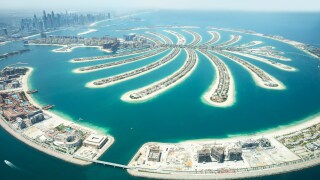Aiming to offer "advanced data services" to its clients, Yahsat CEO Ali Al Hashemi told Reuters: "The launch is the second half of 2023 and by the second half of 2024 services will kick in. This will bring the next generation technologies to the table."
The Airbus-built system will underpin maritime, IoT and data solutions, with Al Hashemi saying the new satellite will enable the highest speeds available in the market. It will replace Yahsat's satellite phone unit Thuraya.
Thuraya operates two geosynchronous satellites and provides telecommunications coverage in more than 161 countries across Europe; the Middle East; North, Central and East Africa; Asia and Australia. In total, Yahsat has five satellites, while its fixed and mobile services cover more than 150 countries.
Mubadala originally aimed to raise $810 million by offering 30-40% of the company to investors – the final figure stood at 40%. The IPO followed the appointment of several new executives, including new CFO Andrew Cole in July 2020, and a new CEO and board members this February.
The IPO was the first major listing on the ADX since Abu Dhabi National Oil Co Distribution (ADNOC) was listed in 2017. Further, it represented the first ever IPO of a Mubadala subsidiary.
Al Hashemi said: “Today’s announcement marks an important milestone in the journey of Yahsat as we begin life as a listed company. As we celebrate this achievement, our priorities remain unchanged – we are committed to building on our strong and proven operational and financial performance to date, in an effort to further strengthen the Group’s position as one of the world’s leading satellite communications services providers.
He added: “We have put in place a strategy that will enable us to not only maintain but also expand our geographical reach and capture future growth opportunities. We will continue to invest in new technologies and infrastructure to meet the global demand for reliable connectivity.”





